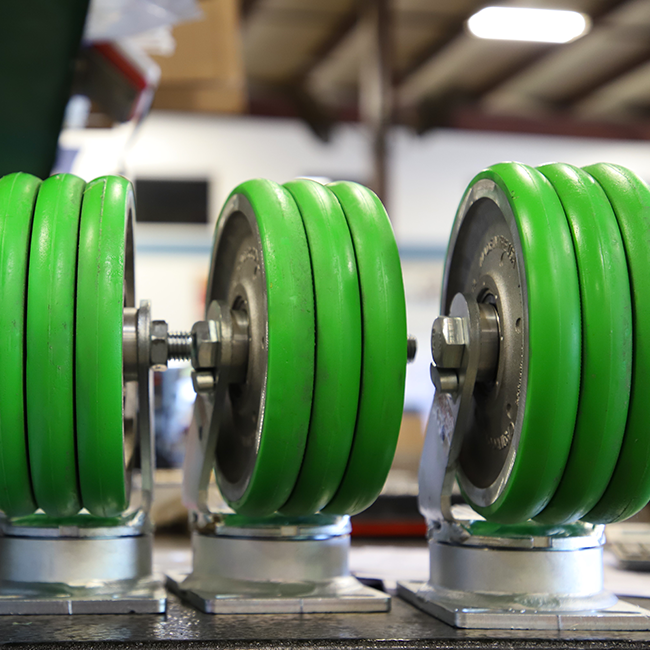

Overexertion is one of the top reasons for workplace injury, and factors like wheel friction and high push or turn force can result in strains, pulls and other problems. A recent article published in spine universe entitled: Industrial Ergonomics: Material Handling and Back Injury, noted the Bureau of Labor Statistics found that workplace injuries resulting from overexertion (musculoskeletal disorders) accounted for 31 percent of the total cases. These injuries can become costly in lost time and productivity, especially in industries like Aerospace and Ground Support Equipment.
Something had to be done, and as a technology leader who is always looking for new ways to enhance productivity and improve employee safety, Caster Concepts are the ones to do it. By working closely with engineers in a variety of industries, they were able to develop TWERGO,® a multiple wheel ergonomically designed for a wide variety of industrial applications.
TWERGO® caster wheels are unlike any other because of their unique tread thickness and material. They feature split aluminum wheels with a carved-out core that allows for a thinner tread design and improved ergonomics due to the wheel’s uniform compression. TWERGO also utilizes a patented force-reducing technology that is designed to allow operators to start moving loads with less force. This force-reducing technology also allows operators to move loads around corners without the traditional scrubbing and sliding that other wheels might create.
You can always make a good case for improving productivity and safety in the workplace. And you’ll find plenty of compelling reasons how a TWERGO® Caster can do just that. For example, a large airplane manufacturer was automating assembly platforms, which weighed 48,000 pounds apiece. The existing push force for each wheel was 15% of the total weight. With new TWERGO® Wheels, the push force was reduced to only 4.5% of the AGV’s total weight. That means less operator strain and less pain, because the AGV was able to perform with greater efficiency.